I’ve decided to give something odd a go. In the summer, a bright red common/Rhoeas poppy plant bloomed from a crack between a house and the pavement/sidewalk* a few doors down from our house. My daughter was OBSESSED with it, wanting to pick it/pluck its petals; my son liked tracking whether it was in bud, blooming, had been picked or lost petals, etc. So I decided to tackle the overlooked gardening opportunity of the crack alongside the front of our house and the pavement!
Most typical Victorian terrace (row) houses in the UK would have a small front garden, with a few homes having much larger ones and a few others having none at all. That’s us, the none at all crew. There is a lot of other period charm on our somewhat famous road – it’s got a ton of artists and it’s a conservation area preserving some nice detailing of pretty windows and relief detail above them – but no front gardens, and thus nowhere to plant flowers out front. (And while I’ve toyed with the idea of both window boxes and floor-based plant containers, they’re sadly far more likely to be stolen, vandalised, and/or used for litter than anything else, so I haven’t taken that plunge.)
The first thing I did was reach out to a contact on Twitter (back before it went foul) who knows about historical buildings, sketchy Victorian house foundations, and gardening. She said it wouldn’t be an issue to deliberately try to grown things in the crack between the house and the pavement as long as I pulled up anything looking like a tree. No worries there! Now that I had such an official safety answer, I was determined to try this.
In order to create a pretty pavement planting, I decided to get creative. It’s an easy spot for “volunteers” to grow, but less easy to make something deliberate happen – all the litter and street sweeping and wind and rain and shoving our rubbish bags and bins against it weekly will likely remove and replace the silt that gathers there a zillion times over in the space of one planting year, right? But I figured I could try to account for this by creating a more “sticky” type of soil.

I bought some artists’ fine clay and some fine sand, both in light greyish tones, and mixed them together with water. I then mixed in a few handfuls of potting compost** to change the texture and colour to better grip and better match the mortar in the crack between our house and the pavement, and then I lastly mixed in an entire packet of 500 rhoeas poppy seeds.
I had dithered a lot about which poppy seeds, exactly, to go for. Our brick is reddish-brown, our front door is a bright rich periwinkle-ish colour (Mambo by Little Greene), and I wanted flowers that made the kids happy but also looked – I don’t know, sophisticated? Intentional? Complementary? Heh.
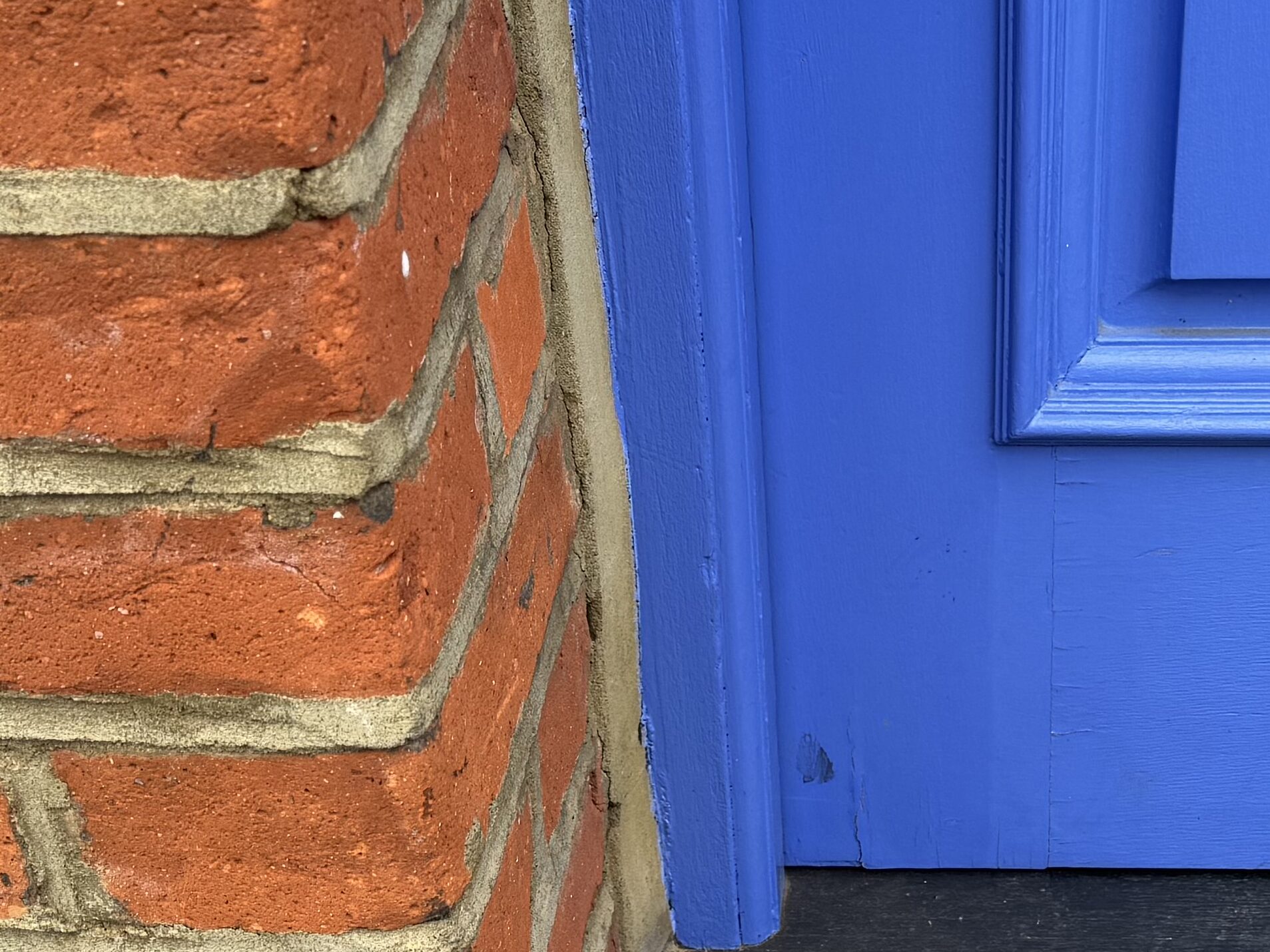
As I’ve said elsewhere, I don’t love mixes of seeds or different colour plants, bc I don’t think they look as elegant as single varietals, so I wanted something somewhat uniform across all blooms. And I knew that papaver rhoeas, the common poppy, would work because I’d seen it growing just a few metres over. So I settled on this alternative colour. (I later went back on this and added in another poppy, heh.)
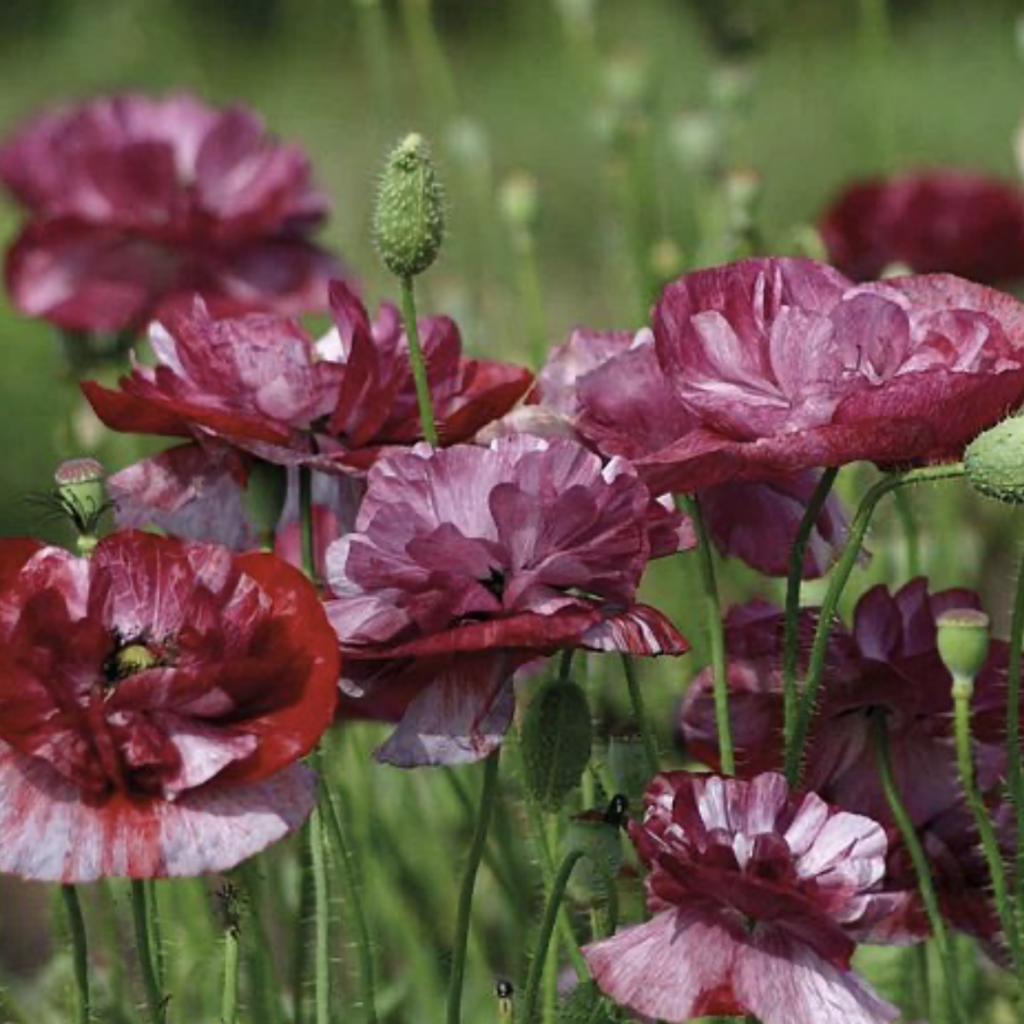
I also then caved on my own no-mixes rule and added in these Amazing Grey papaver rhoeas seeds in a second batch, along with a few other seeds listed below, because I thought they were just so beautiful and cool. (Even though my kids will likely be less excited by GREY, haha. This is for me, not them!)
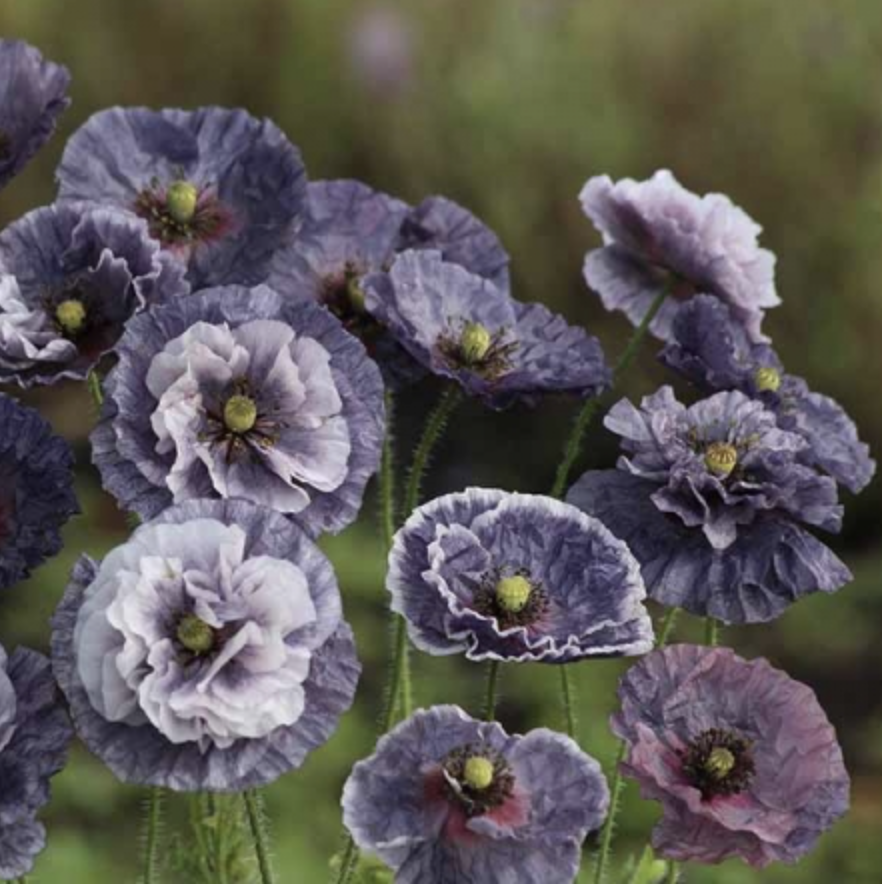
I also considered a few other poppies, as follows, but ruled each one out because of various factors, mostly seed availability quickly with free shipping haha. (But also, whether they come up mixed or uniform, which can be hard to tell from stock pics, so it helps to do a Google image search for each varietal to see how they come up for other gardeners.) Plus, height – I grew quite a few papaver somniferum/opium poppies from seed in my back garden last year, and learned that they get tall and awkwardly floppy without support, which I couldn’t provide in this spot.
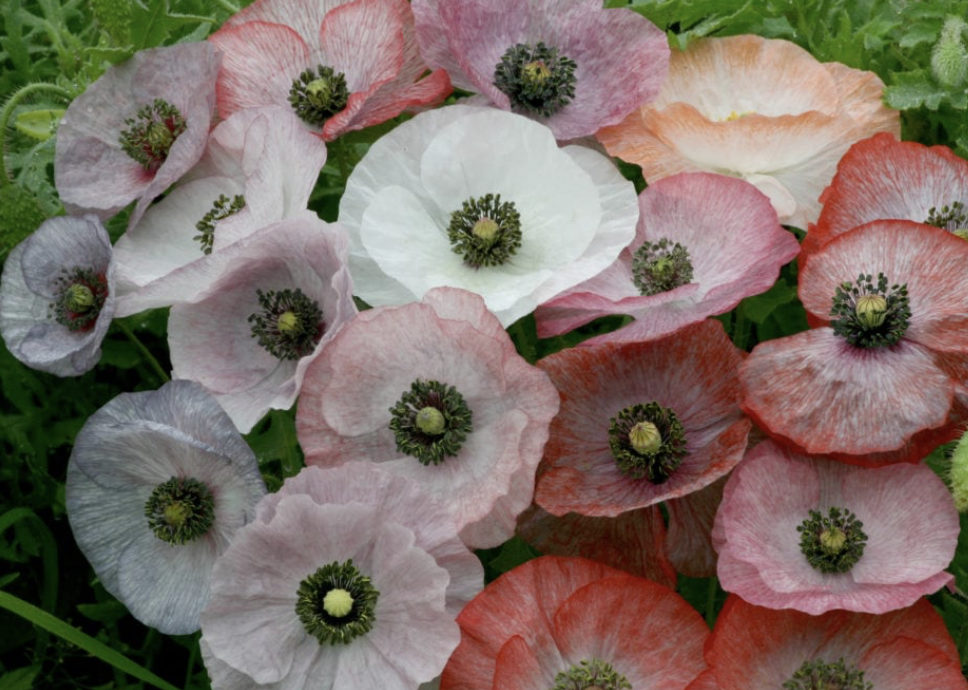
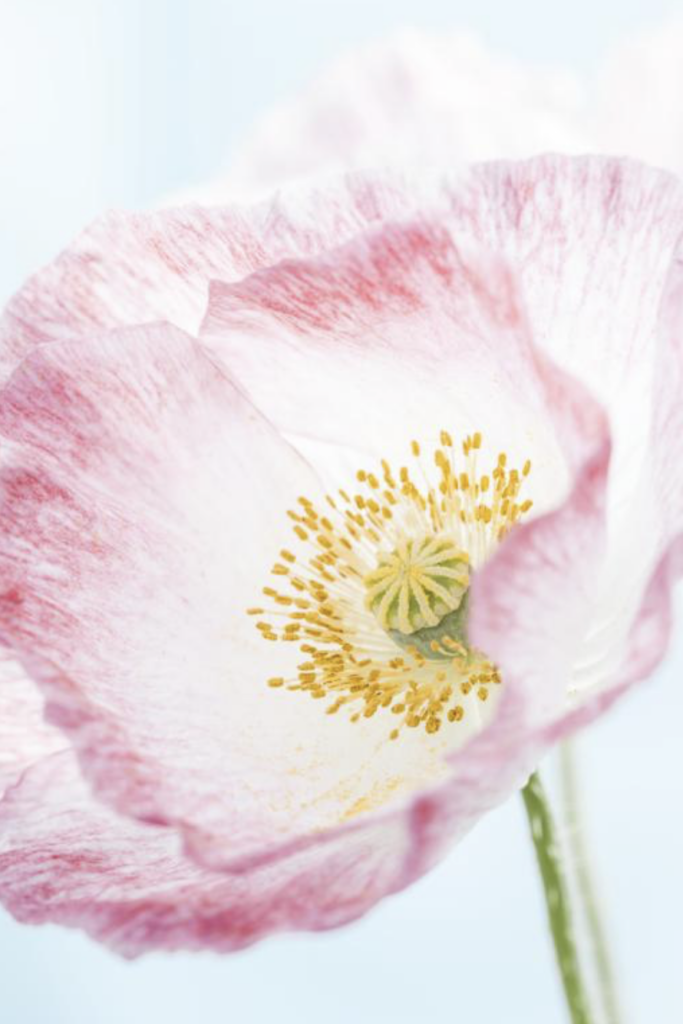
A lot of these Rhoeas varieties are called “Shirley” poppies, but apparently that isn’t fully accurate. From Chiltern Seeds, about the True Shirley Poppy
Originally raised in the 1880’s by the Rev. W. Wilks in his garden in Shirley near Croydon, this whole remarkable race comes from one solitary flower he spotted in a waste corner among a patch of the common scarlet field Poppies which had a very narrow edge of white. Over the coming years he worked on the progeny of this one bloom by a process of selection and elimination to give us the Shirley Poppy we know today ….. Ah! But not quite! When later writing on the subject, he set out what might be said to be the specification for his Poppy. He said, “Let it be noticed that true Shirley Poppies (1) are single, (2) always have a white base with (3) yellow or white stamens, anthers and pollen, (4) never have the smallest particle of black about them. Double Poppies and Poppies with black centres may be greatly admired by some, but they are not Shirley Poppies.” He reflected, as so may we all, that the world’s gardens are furnished with Poppies all the direct descendants of that one single seed capsule harvested in the Shirley vicarage in 1880. So that’s what we have here – Poppies the Rev. Wilks would approve of in colours from the brightest scarlet to pure white with all shades of pink between and all varieties of flaked and edged flowers. All that and one of the easiest of plants to grow – just sow and forget, and lots of seeds to do just that.
Their site only shows this one look, but do a Google search for Shirley Poppy and you’ll see a bunch of colours and even shapes with both single and double varietals. Lovely, but again, not the intentional hue vision I had in mind.
By the way, the far more common form of this poppy is either pure red like this in the wild:
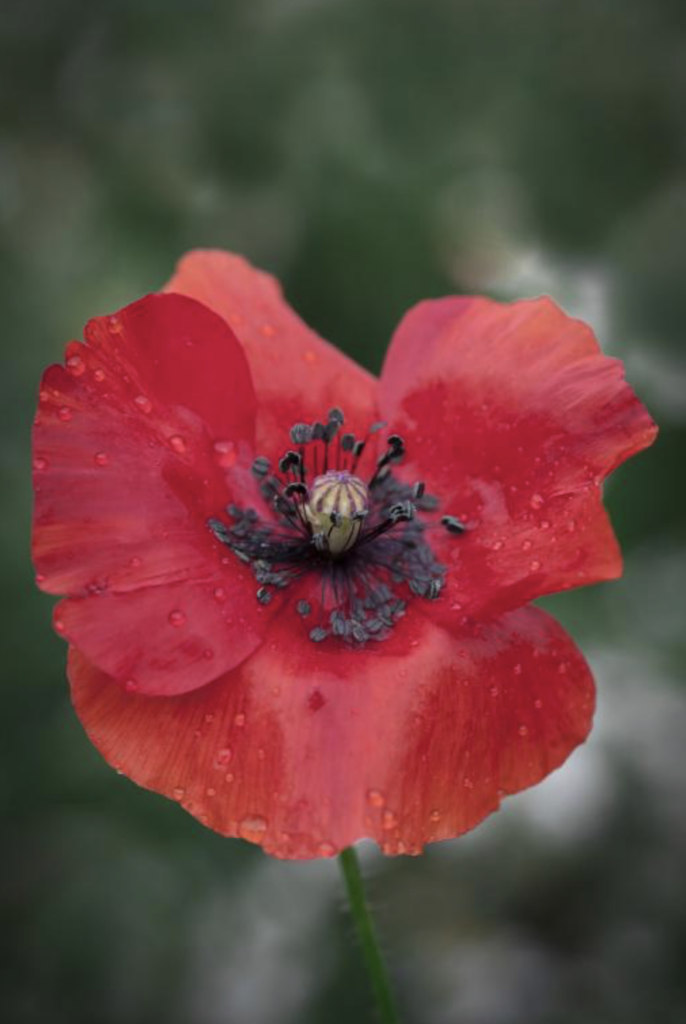
Or like this with “ladybug” spots:
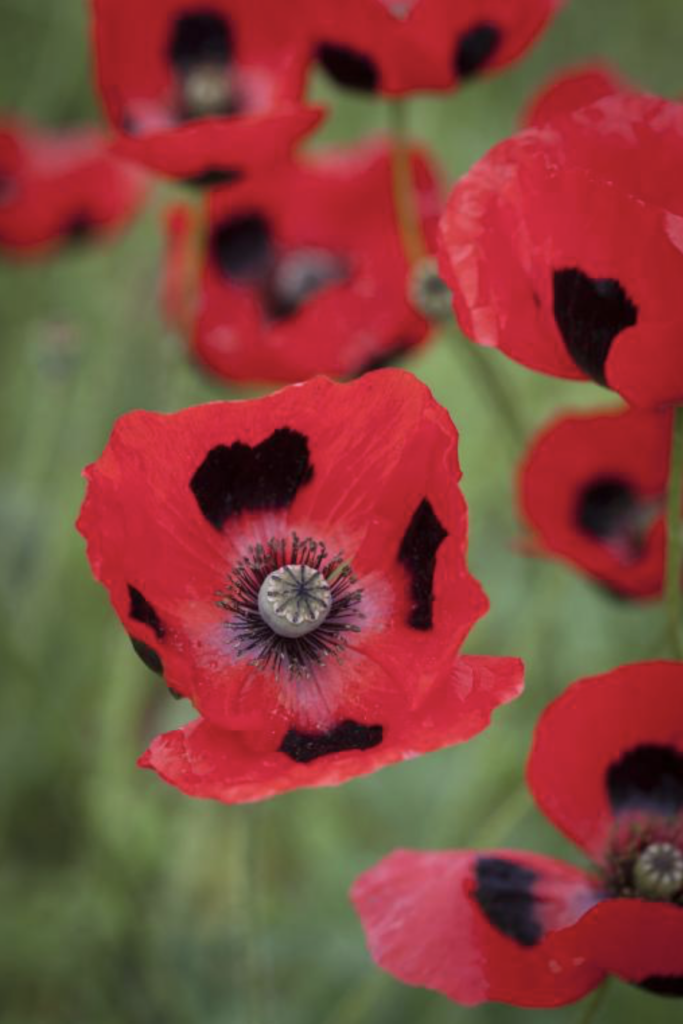
This is the one that we see everyone in the UK sporting on Remembrance Day (like US Veteran’s Day), during November when of course these are not actually blooming anywhere, heh. They’re classic and lovely, and the plain red ones are the ones that we spotted growing in a crack down the street, but I wanted something to match our home for our little makeshift plot. (I also slightly wanted to speak to the interiors palette of bright pinks and blues, so like, not a red/orange/yellow flower.)
So in my second batch of this soil (I kept in the freezer), in addition to adding in those grey poppies, I also mixed in others – two different kinds of trailing/spreading campanula which I see growing up walls/in cracks a ton around here, and some “purple gleam” California poppies (Eschscholzia). Oh, and some dwarf cornflowers that don’t get too gangly in height, allegedly, since I can’t stake things here.
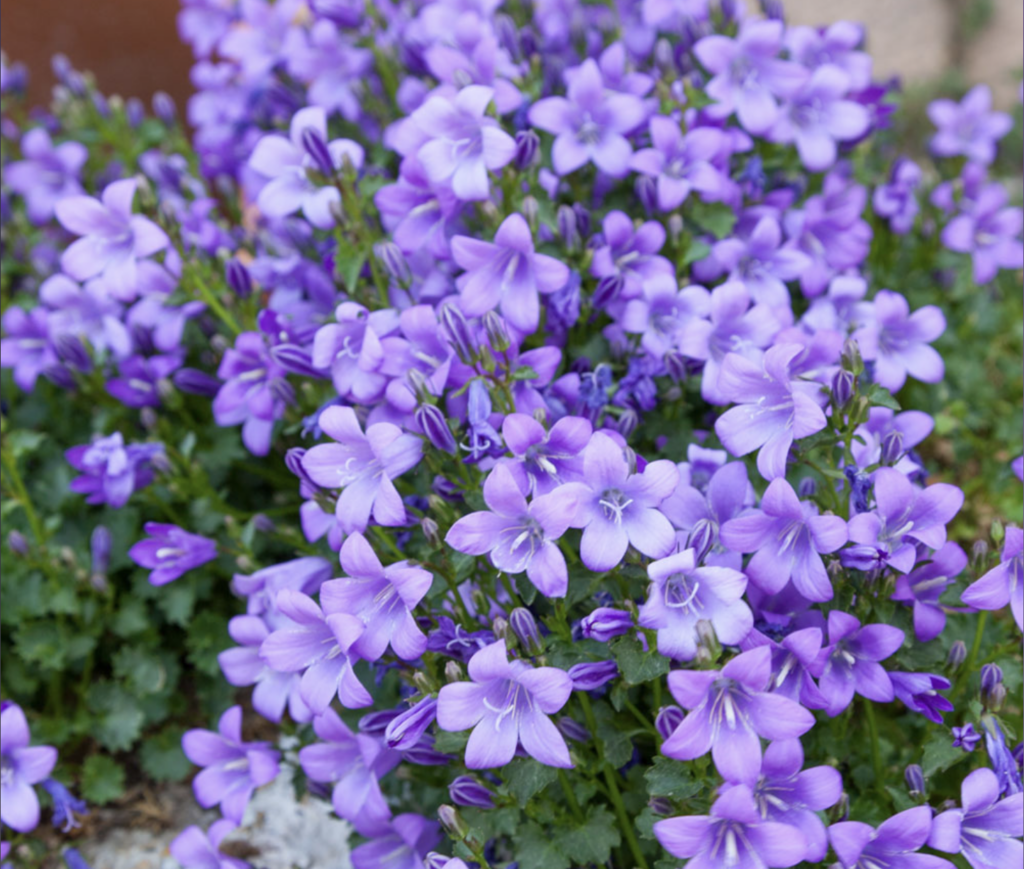
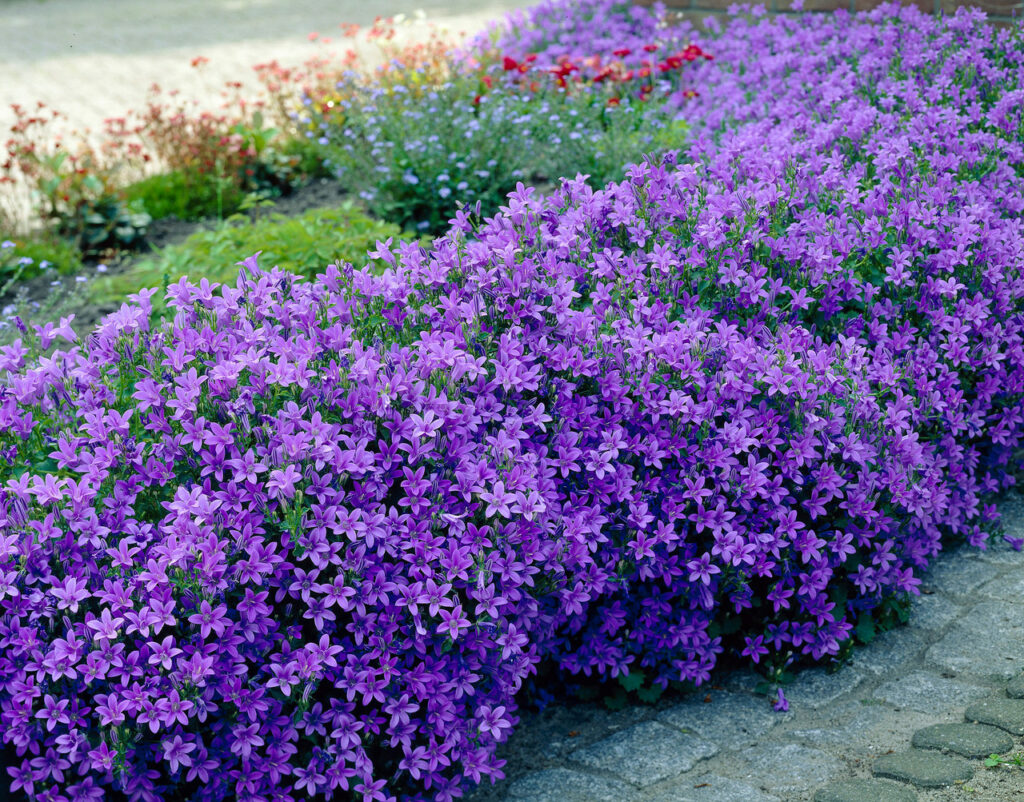
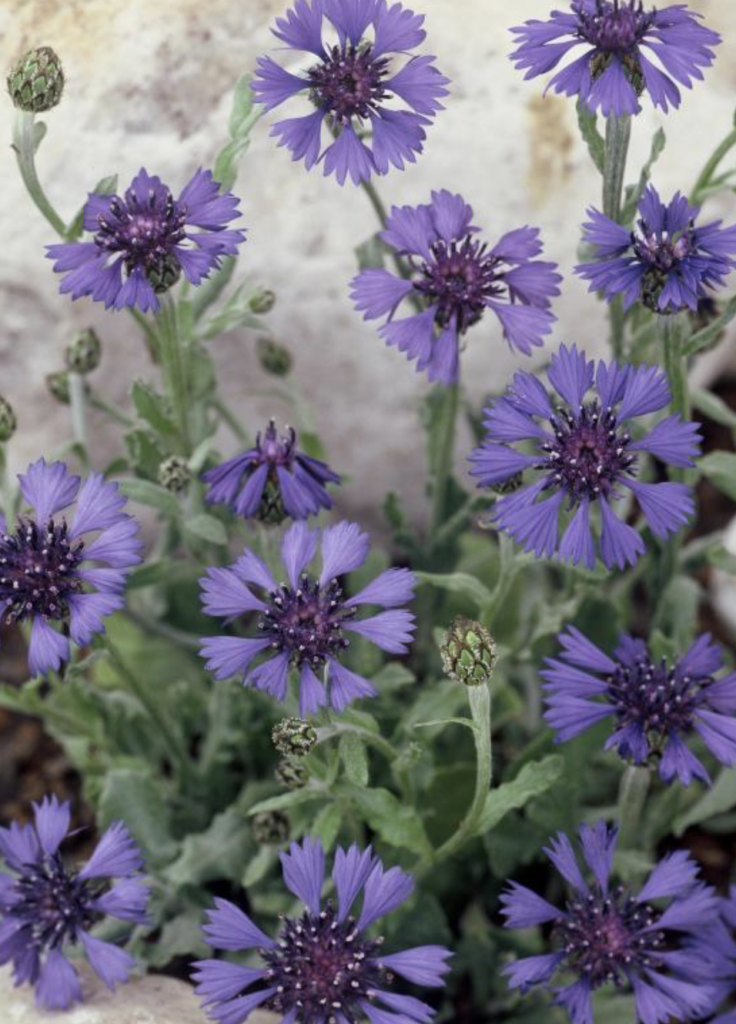
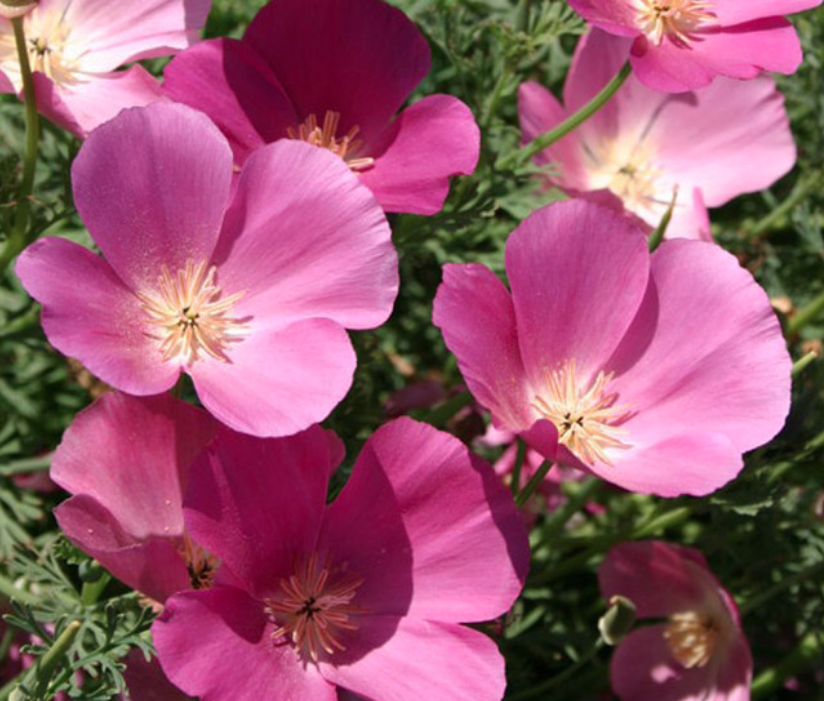
Clearly, with all these tones ranging from burgundy to periwinkle, I’m trying so hard to unify the front door and brick colours – after all, I kind of knowingly broke colour/design rules when we picked that shade for our door. It’s a clean bright saturated paint next to the muddy/earthy brick tone; slightly complementary but mostly a bit jarring. However, there are so many other jewel-toned and bright happy front doors that it felt like the right move for neighbourhood cohesion as well as our own joy, but it does stick out a bit! (I’d never do an interior with a clean-earthy juxtaposition like that, unless I had an important reason like being desperate to tie in some specific antique heirloom in those shades, etc.) So my planting scheme of bricky-ish poppies and periwinkle-ish flowers may help make it look intentional. (Or it may all utterly fail to take, or get rinsed away… a fun experiment, regardless!)
As winter went on, I was pleasantly surprised to see that many seedlings seemed to take, and even survive the several sub-zero (Celsius) temps we got for a good stretch this winter. And now, in early spring, I’m pleased to have made any progress. But, they did turn out weirdly patchy, see? I mean, I have three solid clumps that definitely include at least some of the plants I deliberately sowed, but hugely spaced apart! (The leftmost patch just out of full view gets watered by the drainpipe; the centre and right seem random.)
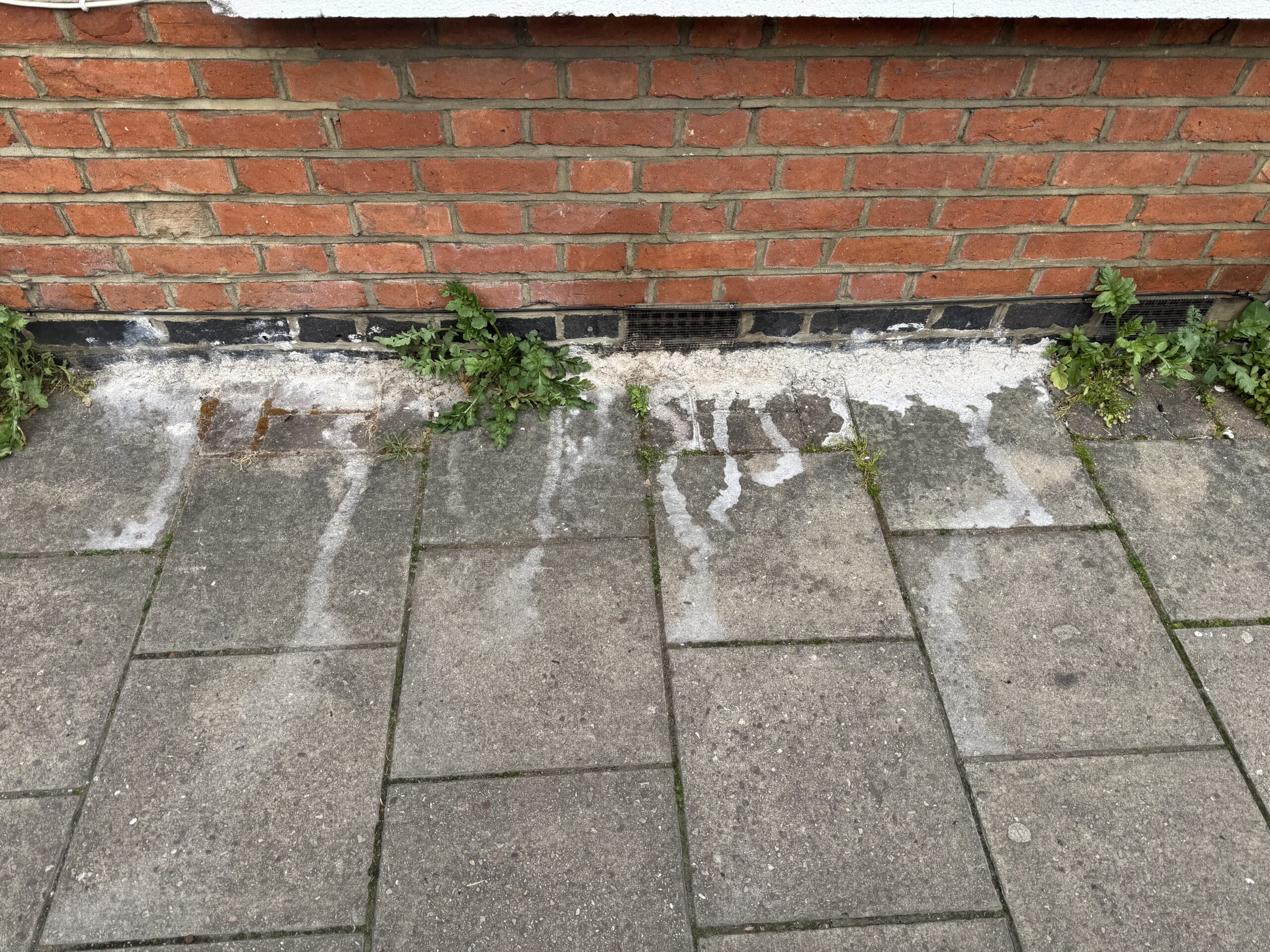
I ordered yet more seeds and mixed up another batch of weird soil this spring, hence the temporary clay streaks here. I don’t actually think the spring-sown seeds will do as well as the autumn-sown ones, as I haven’t seen even a peekaboo of green yet (late March), so maybe I need to sow multiple batches in the autumn to fill in gaps.
Regardless of the aesthetics, one thing important to me is that anything we plant must be good for pollinators. Now that I’ve learned how so many flowers aren’t, I want to make sure we do our part in the plant-starved front of the house to offer up a little snack to bees and butterflies and their buddies before they make it all the way round back for the full buffet our back garden*** has to offer. I’ll post an update with actual blooms come late spring/early summer!
UPDATE, late May: So, it’s *sort of* working? We have these two clear clumps of flowers – California poppies right by the drainpipe (makes sense) and Pandora poppies along with some random volunteer petunias over by the… gas maintenance box? With no clear water source. Can’t tell why the entire planted crack between these two didn’t bloom; same with the other side of the gas box. But these bits look great and are just blooming and blooming!

I’ll definitely do this again next year, and I’ll definitely plant the seeds in the autumn again too. Our winters seem to be mild enough that the seedlings I planted then did really well growing through the winter and being strong/big enough to bloom this spring; none of the spring-planted seeds seem to have established at all. I’ll probably end up adding more and more until I can figure out how to get the whole area to green on up, someday!
*We call the things you walk on pavements and not sidewalks here in the UK; I’m sticking with that here on out bc I’ve largely adjusted my vocabulary over the last 5+ years here.
**Soil – for some reason all potting medium is called “compost” here. Food waste that you generate in your kitchen is called food waste, even though it gets composted and turned into… compost. Roll with it.
***Yards are gardens here.

